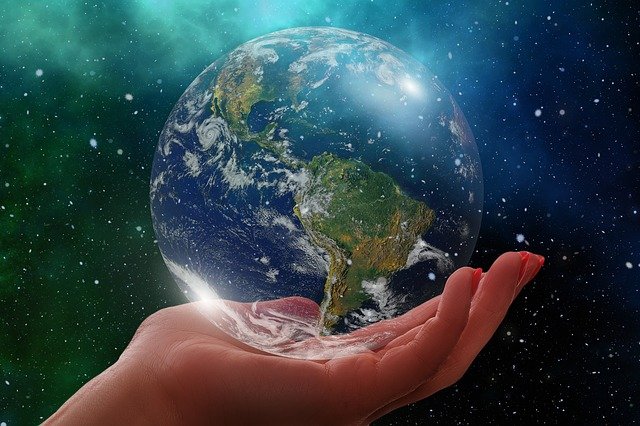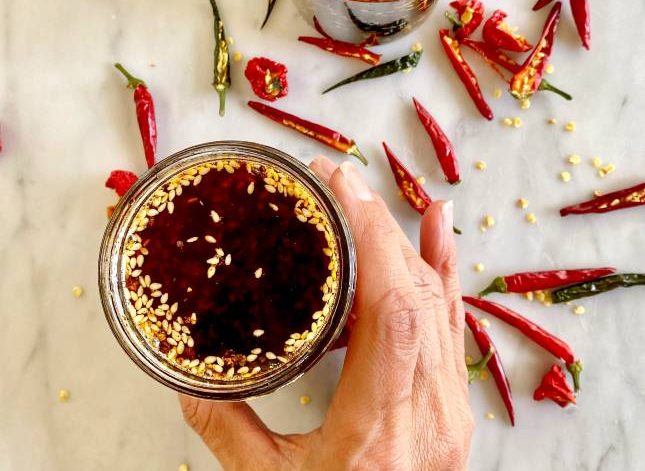Picture credit: Gerd Altmann
We all know the toll that the industrial revolution has had on our environment, and even our own bodies with pollutants being at an all time high.. However, as explained by Su-Lin Sze, there are ways in which we can reduce that toll both on our children and the world.
The emerging reality of the twenty-first century is that finding a way to live sustainably and
holistically to improve environmental health is really a necessity, rather than an ideal. It is is our challenge, and while many of us would support that ideal of a healthier world, we are often unsure of how to achieve that. This article considers personal ways to support a world that is more healthy and less toxic.
Climate change: An obstacle to health?
According to a paper published in 2012 by the International Journal of Environmental Research and Public Health, children are particularly vulnerable to the health damaging effects of climate change. Increases in mental illness, nutritional deficiencies and dermal, respiratory and immune weakness are all on the rise because younger generations are more exposed to environmental pollutants, toxins and poor food and water quality. It follows that the effects of climate change
on economies and climate-sensitive industries will also have irrevocable consequences for children’s health on a global scale.1
According to the World Health Organization (WHO): “…climate change contributed to more than 150,000 deaths and 5.5 million lost disability-adjusted life years worldwide, in 2000 alone,2 and
more than 88% of this burden occurs in children under the age of five years”.3
The above paper cited worldwide damaging factors such as air pollution, natural disasters (including heat waves and droughts), exposure to toxins and pollutants, poor nutrient status of food and reduced water. Exposure to toxins and pollutants was linked to hormonal and reproductive abnormalities, poor immune function and the development of cancer, while air pollution was linked to increased incidence of asthma, lung disease and birth defects.4
So what makes children more vulnerable than adults?
- Children possess smaller detoxification organs like the kidneys and thinner skin, compared to adults.
- They also require more food and water to grow at a faster rate than a full grown adult. So they have to process and detoxify a higher volume of substances than an adult.
- Children more often participate in outdoor activities and are more exposed to the environment.
- Life expectancies are on the rise, meaning that today’s children will have a longer overall exposure to pollutants and are more susceptible to associated chronic diseases as a result.5
According to a paper in the Journal of Epidemiology and Community Health entitled “Persistent Organic Pollutants in Food: Public Health” (2002), the most common exposure to known pollutants such as pesticides, industrial chemicals and commercial manufacture by-products is through the diet. Major disasters associated with exposure to toxic elements from the diet and the environment have contributed to a safety-driven approach to food, such as the outbreak of the fatal neurodegenerative disease Bovine Spongiform Encephalopathy (BSE) in the 1980s in the UK6 and mass food borne Escherichia coli (E.coli) O157 infections in the US in 1982.7
The nature of the danger
Those considered most at risk are pregnant women and children. The problem is not necessarily the dangers to health posed by any one of the hundreds of compounds found in these chemicals.In minimal doses they may not be acutely harmful. Rather it is the nature of our exposure to them; which is often chronic and persisting.8
“From a simplistic point of view, toxicity is a function of exposure, and exposure in turn is a
function of dose and time.”9 The chemicals used in conventional agriculture are many and varied. Eleven major categories from fungicides to agents that affect insect behaviour have
been recognised in a study by Plimmer, and within those categories, over 130 different chemical classes exist.10 One clinical study revealed that insidious and persisting exposure to pollutant chemicals such as TCDD (a dioxin compound) led to hormonal irregularities and abnormalities such as reduced sperm count.11
Another clinical study revealed that persisting prenatal exposure to dioxins and polychlorinated biphenyls, known chemical pollutants, may reduce cognitive power in children.12 “…although hard evidence is scarce, some scientists report that certain residues in conventional food could, over many years, raise the risk of cancer and other diseases in humans.”13
These findings are sobering, but not unexpected, and they have been drivers for the emergence of socially evolved industries such as organic food and fair trade, which are growing faster than their conventional peers! !e organic food industry was one of the most rapidly expanding markets in the US and Europe in the 1990s.14 Two years ago it was valued at US$40 billion.15
According to the Victorian government, the annual turnover of the Australian organic food market is currently up to $250 million with an additional export revenue of up to $80 million.16 !e industry is forecast to grow 60% yearly driven by rising consumer demand and impressive retail growth; as much as 670 per cent from 1990 to 2002.17
“It is estimated that more than six out of every ten Australian households now buy organic foods on occasion” – State Government of Victoria website, June 2011. Consumers of organic produce will be happy to know that evidence of the increased safety of organic food is mostly positive. A 2002-2003 New Zealand sampling of over 300 pieces of organic food from fruit and grains to nuts, revealed that 99% of the organic produce contained no residues of any of the 45 chemicals tested for.18 !ese sorts of results suggest we are on the right track with our food! But can we go further in ensuring our childrens’ quality of health? Yes we can!

The next steps…
There are two more steps beyond organic food for the modern day parent to consider. The first is to broaden our aspirations for our food beyond the avoidance of chemical and pesticide contamination. By moving toward an agricultural model that maximises the safety and importantly, the nutritional content of our food.
The second step is to further expand beyond the world of food to the world of personal care. In
essence, what we put on our bodies is just as important as what we ingest! This means better health inside and out for the next generations.
Biodynamics: A Step Beyond Organic
Many of us are familiar with organics. Biodynamics is not so well known in Australia. Rudolf Steiner (1861-1925) created the system of biodynamic farming, which is recognised as one of the major initiatives leading to the creation of the international organics industry in the early twentieth century.19 At the time the changing health of soil and livestock were the prime concerns, following the introduction of pesticides and other chemicals into the European farming industry. Biodynamics offers a higher nutritional value to the consumer than conventional growing methods. A 2011 study published in the British Food Journal compared biodynamically to conventionally grown mangoes in Brazil. Results revealed significantly higher levels and potency of antioxidants, specifically flavonoids, in the biodynamic produce.20
Organic & Biodynamic Personal Care
It’s easy to forget that the skin is an organ that absorbs, just as the digestive system does. Organic personal care products include cosmetics, soaps, cleansers, shampoos, deodorants,
toothpastes, oils, scrubs and lotions. Organic personal care products are becoming more and more mainstream throughout the world. Let’s look at the fast growing sector of organic childrens’ personal care products. Parents will have noticed the growing variety of natural and organic
baby skin care brands appearing on the shelves of health stores, pharmacies and supermarkets worldwide. Europeans spent almost two billion euros in 2010 alone, on organic personal care
products, with Germany being the largest market.21
In the United States, the childrens’ personal care products industry has grown steadily over the past decade. It was valued at $281 million in 2006, and has continued to expand due to population growth, increased child interest in natural products, the ‘mainstreaming’ of organic products and more sophisticated marketing and packaging.23
The marketing world has recognised a current trend toward joint purchase decisions made by parents and children together.24 Whatever this means from a marketing perspective is not so relevant to the average parent. However, what this reveals is that we do influence the way our children make purchase decisions. We set the example for them by educating and including them in our own environmentally and socially conscious purchase decisions.

Picture credit: Sasin Tipchai
The Power of Your Consumer Choices
To ensure that our children have the most safe and quality produce and products available to them, we need to consider this principle: making socially and environmentally sound purchase choices helps socially and environmentally focussed industries to thrive. In the words of the environmental activist and academic David Suzuki:
“Our personal consumer choices have ecological, social and spiritual consequences.”
Today’s new parents, who mostly reached their adult years in a world plagued with concerns about environmental damage and climate change, are a highly motivated group of consumers. Many will likely already know the power that they yield with their purchase choices. Selecting the right products off the shelf can encourage:
- Sustainable farming practices and ahealthier world
- The growth in variety and quality of self care products free from known toxins, petroleum byproducts, unnatural ingredients and preservatives and harmful plastics,
- Fair trade practices
- The use of ethically sourced and ecocertified ingredients
On a more personal level, selecting the right products can also improve the health of your children by:
- Reducing their exposure to potentially harmful toxins
- Reducing their exposure to harmful plastics
- Increasing their exposure to antiageing, antioxidant, and other health sustaining ingredients in high quality plant produce
So how do you choose between one organic product and another?
Always look for the total organic content of the product, as some will have less organic content than others. Also look for biodynamically produced and ethically sourced ingredients. Research suggests that climate change is already posing a challenge to our health and the health of our children. Embracing a more holistic approach that recognises the harmonious co-existence between humans and the environment, is a big step forward. We can make a big difference now
without reinventing the wheel, by simply starting to look at our buying choices. Your support of product manufacturers who share these environmental and social goals, is already contributing to a healthier world for your children.
Su-Lin Sze is a naturopath with a special interest in natural baby care with an emphasis on biodyanmics, organic products and the holistic approach.
This article published in NURTURE Parenting magazine September 2013

Hey there! Welcome to my world of totally natural and powerful healing medicines. Medicines from nature. Medicine from Source. I’m a naturopath and herbalist with extensive clinical experience working with a range of health conditions including hormonal, metabolic, mental health, sleep and more.
I’ve brought together years of clinical and teaching experience, academic skill and curiosity to bring you this blog. I hope you enjoy it! If you do, leave a comment, I’d love to hear from you!





